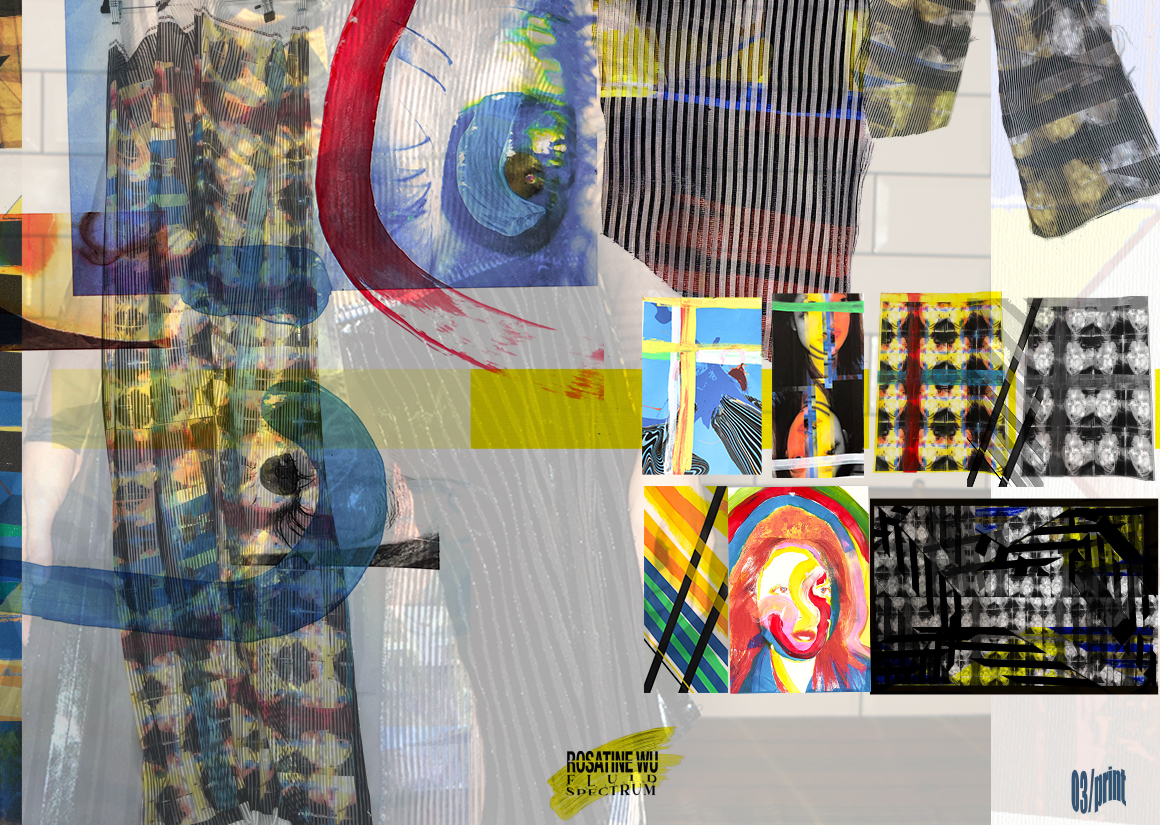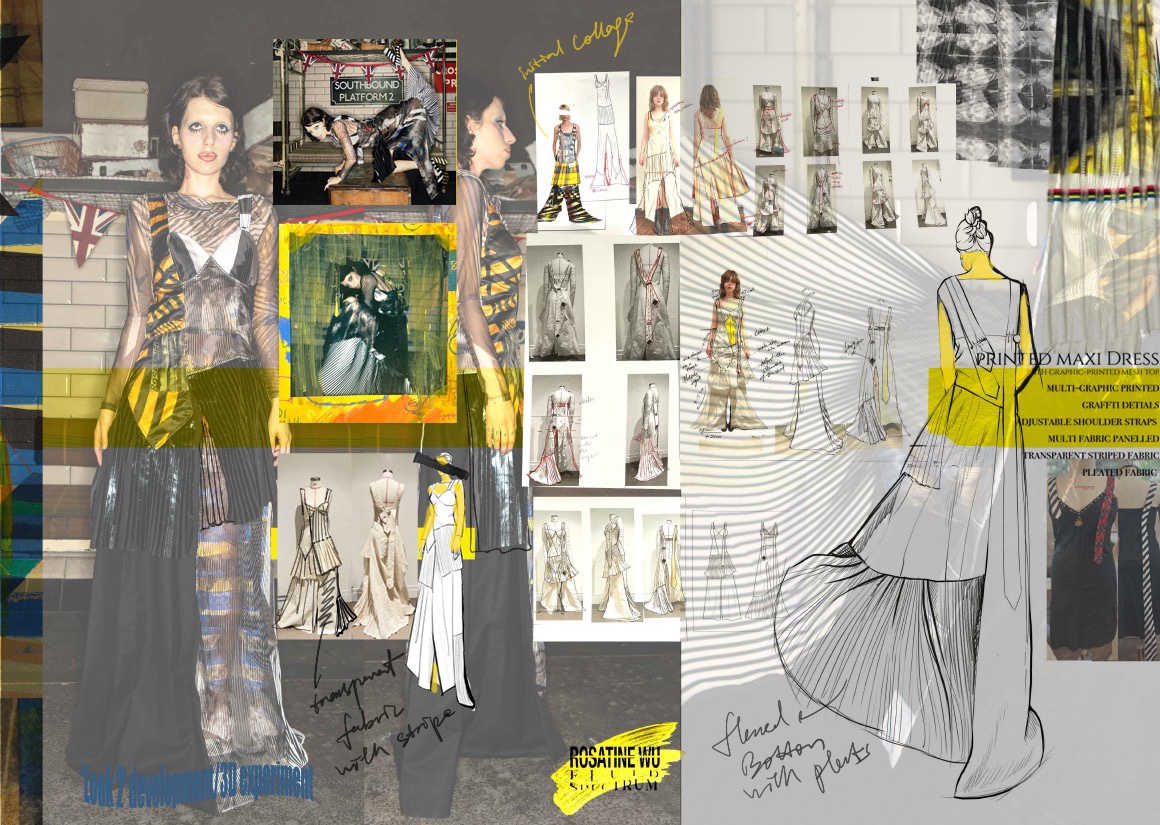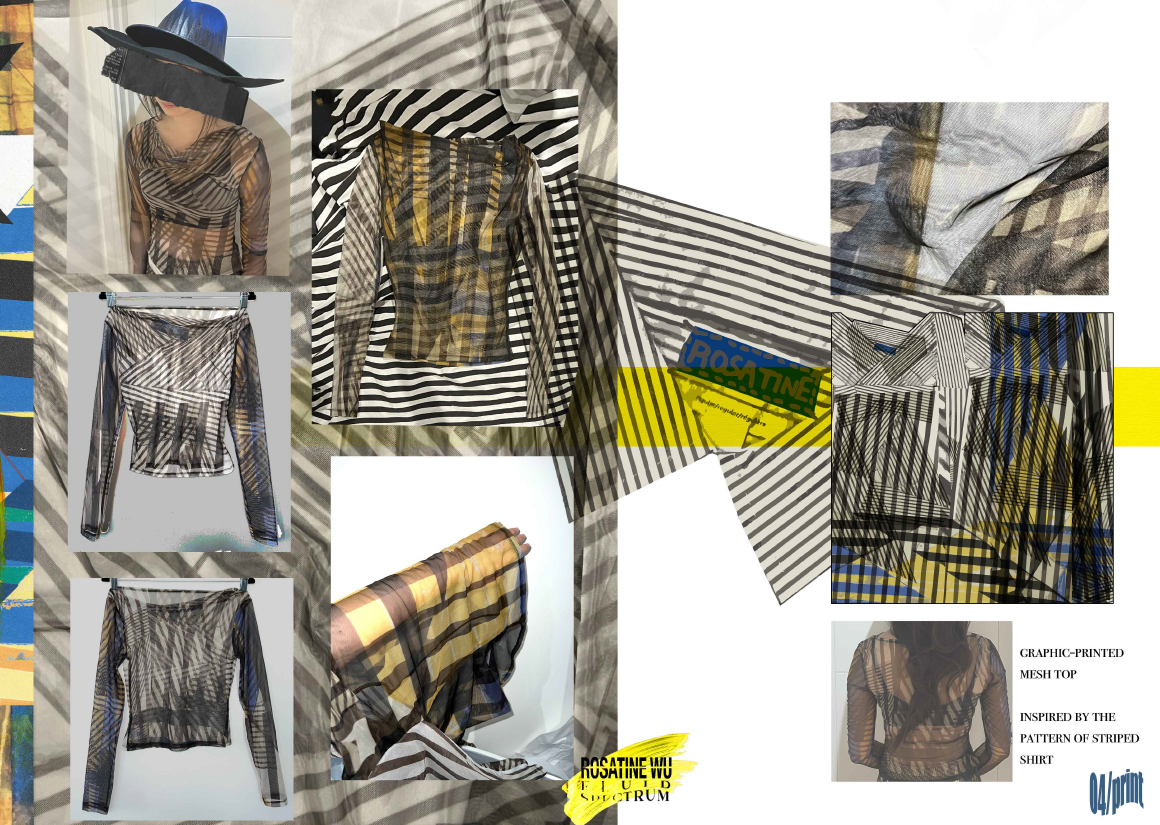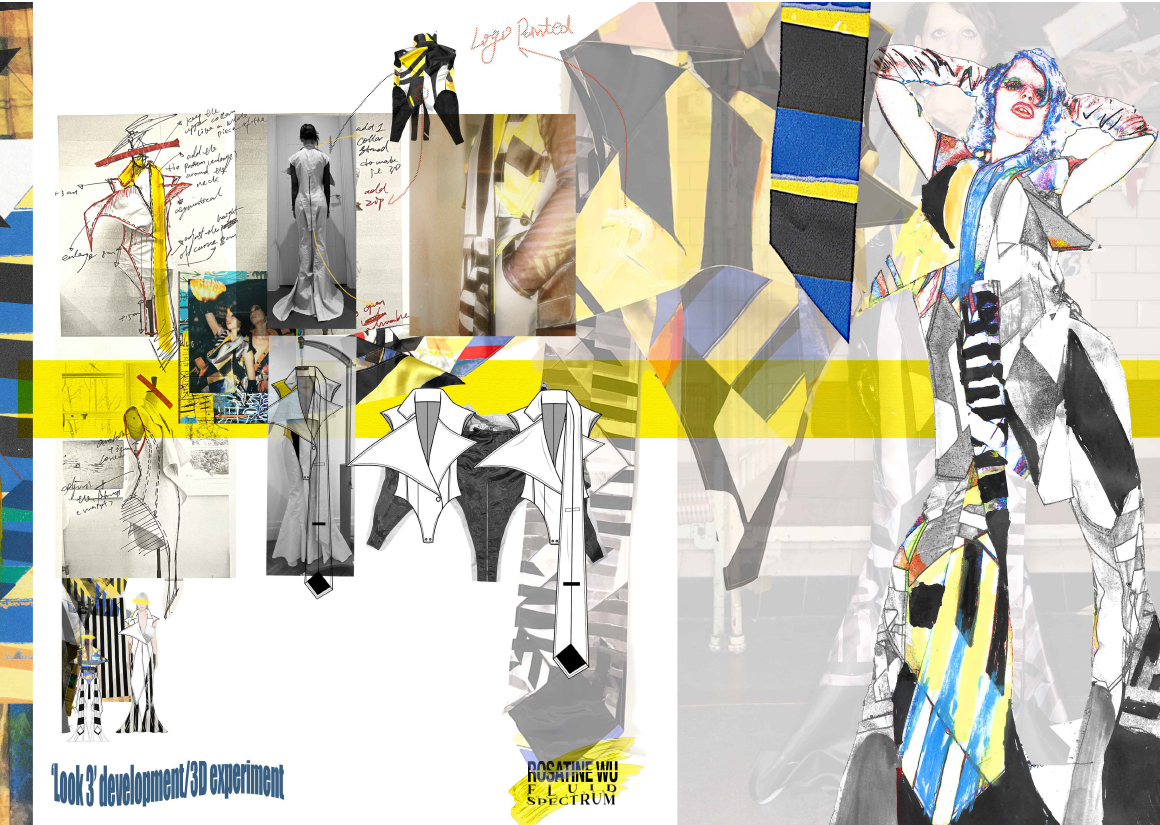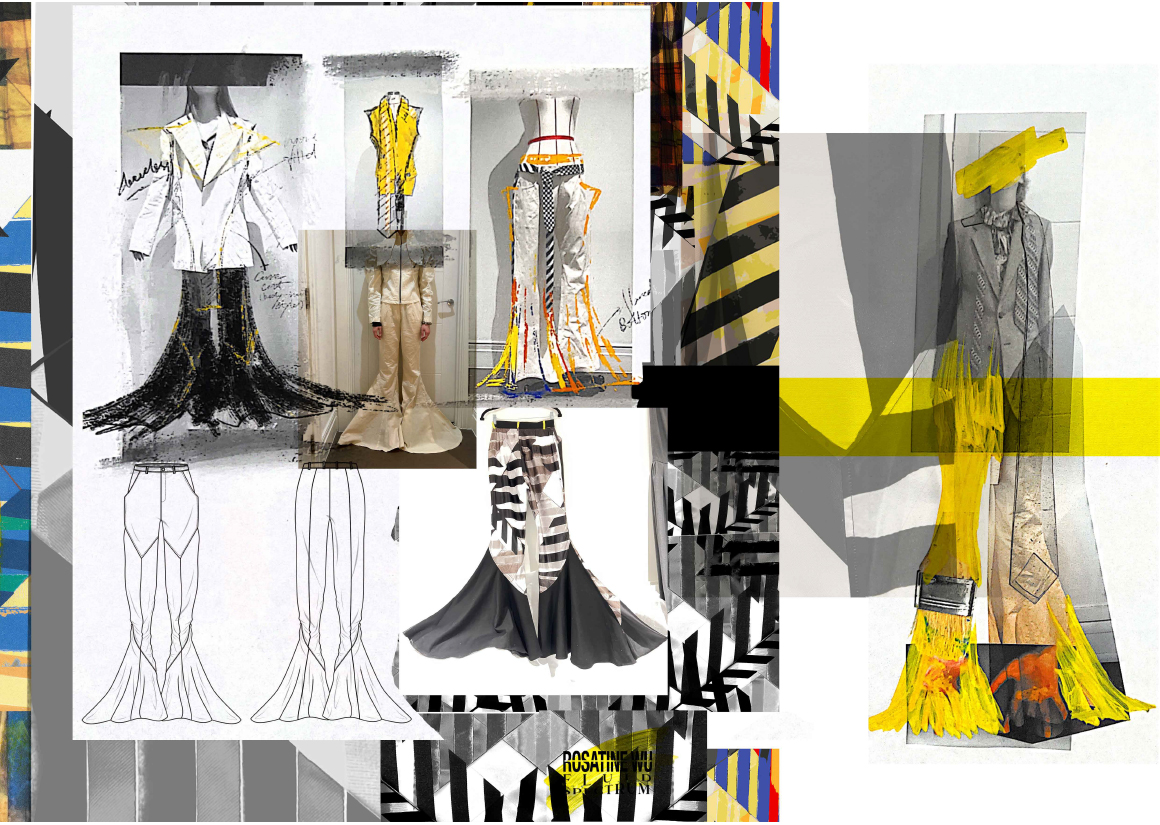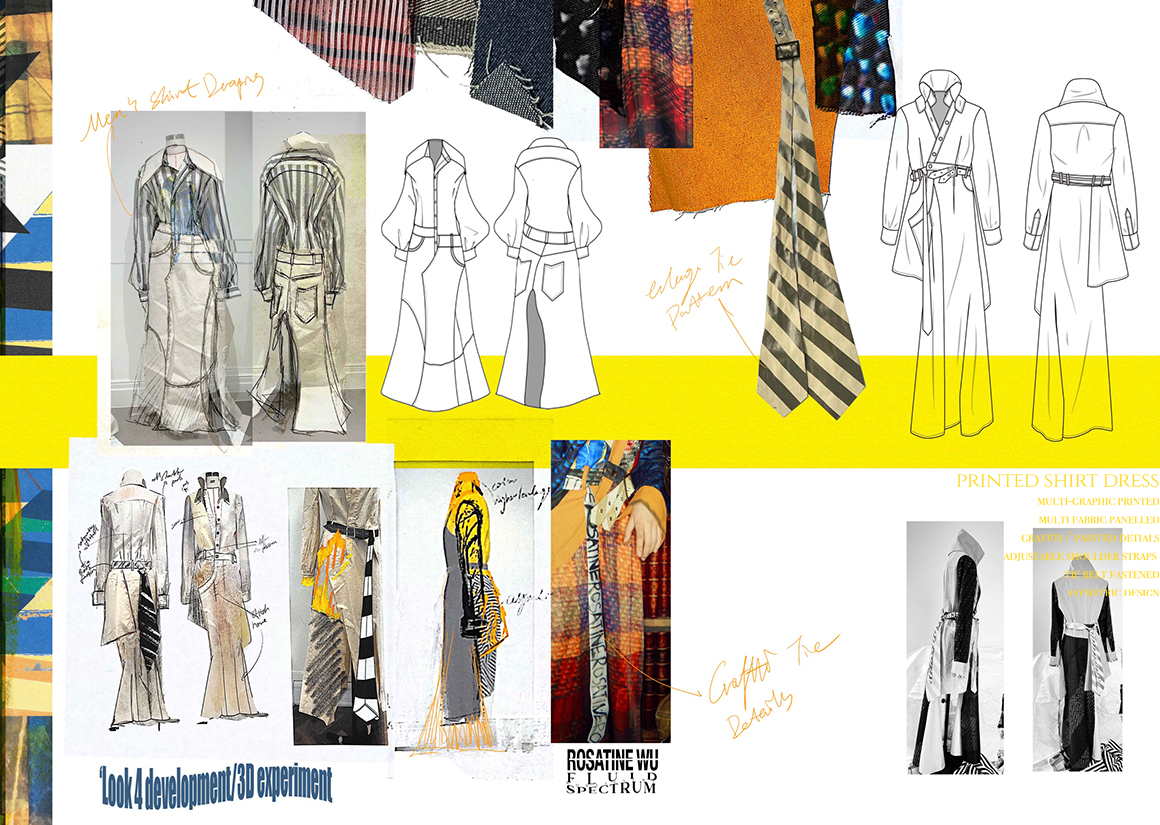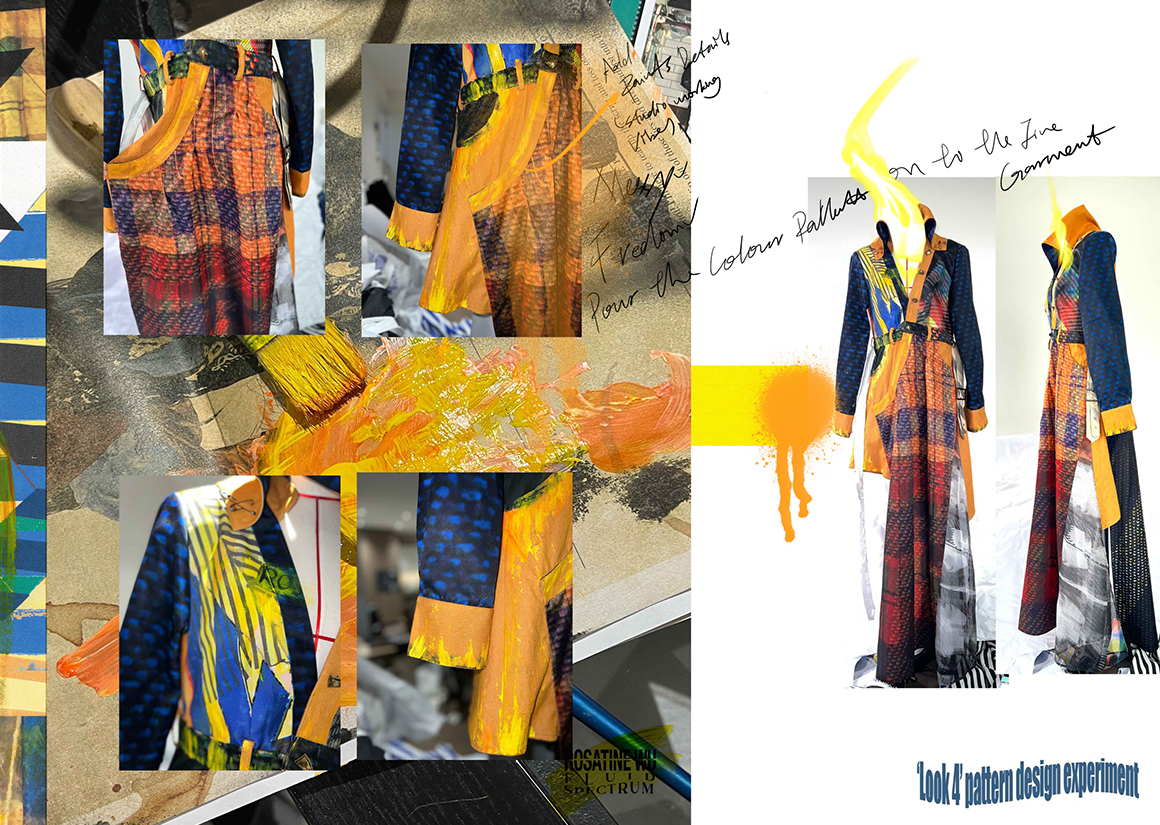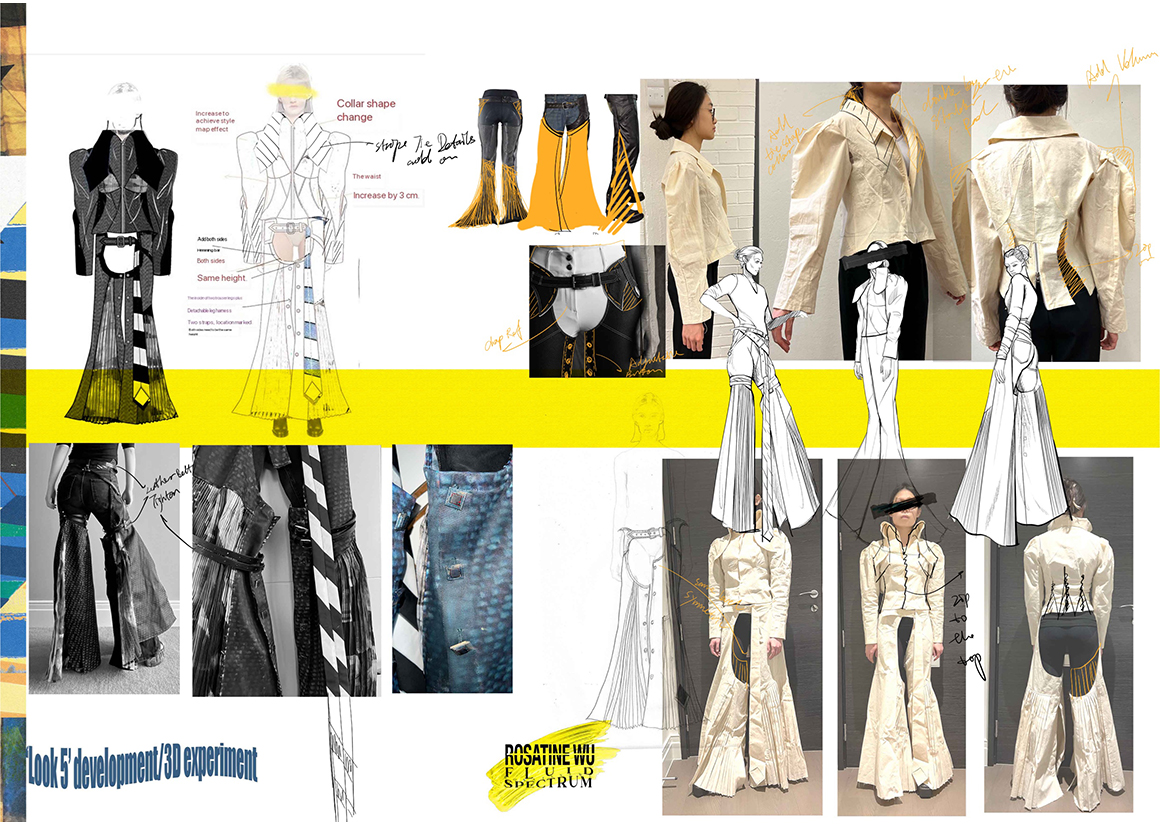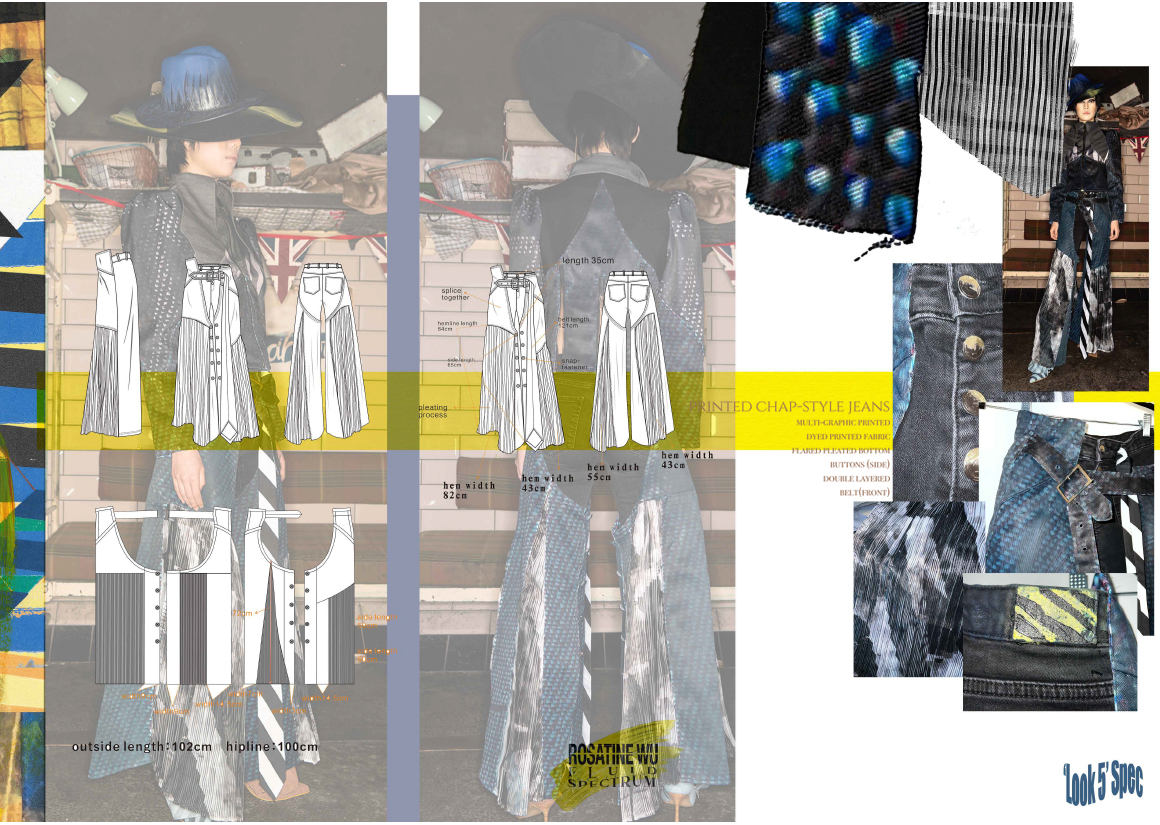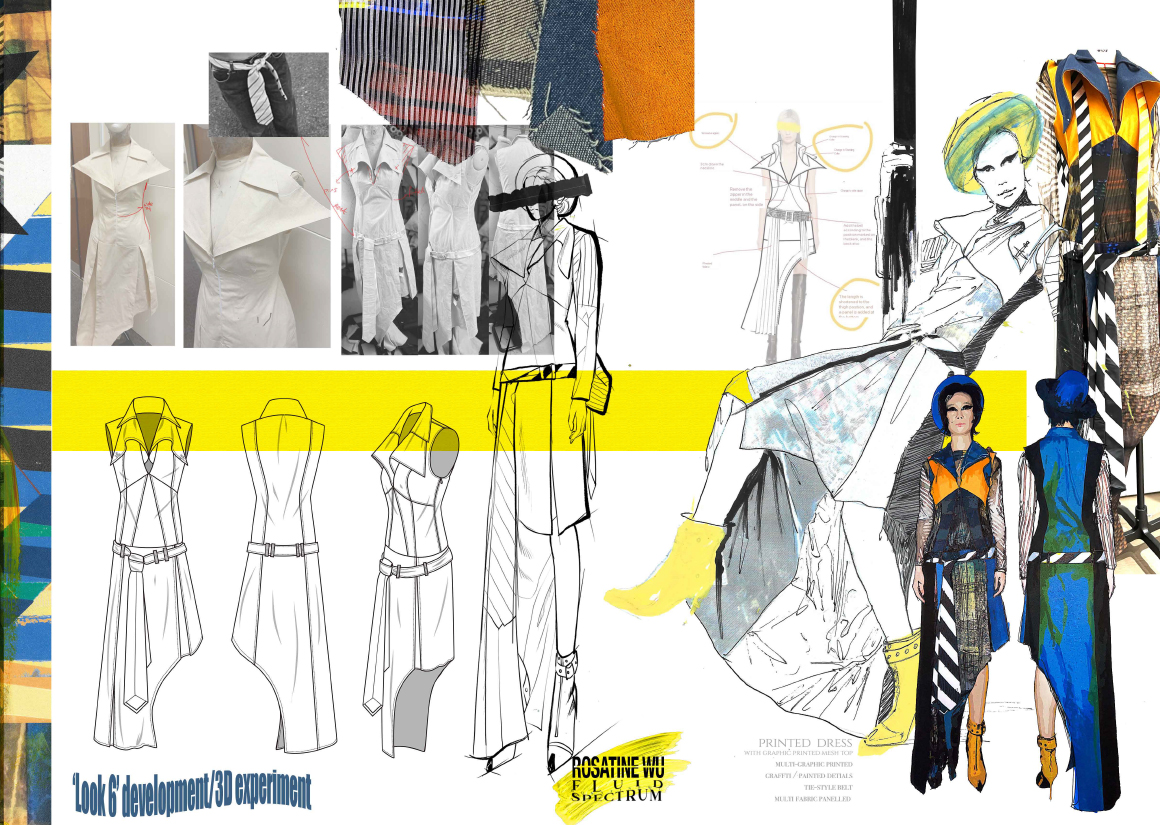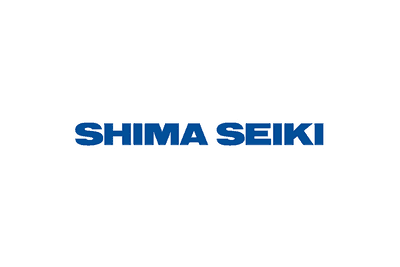
About Me
Hi,I'm Rosatine, a fashion design Graduate from Kingston University
Rosatine (Chuting) Wu is a fashion designer with a focus on print design. Her collections, marked by bold colour palettes, fuse fine art painting with digital innovation to explore themes of self-identity and societal reflections. Characterised by a rich interplay of texture and material.
Rooted in a rich artistic heritage and influenced by my family, specialists in traditional monochromatic works, my work is further enriched by Western art education. This blend of cultural depth and modern innovation shapes my fashion philosophy. My designs challenge norms by infusing 70s retro aesthetics with contemporary flair, expressing freedom and boldness. Through vibrant prints and unique garment construction, I aim to revitalise classic styles with modern flair and inspire those hesitant about bold hues to embrace fashion's expressive potential.
INSPIRATION
Fluid Spectrum: Splashing the Canvas with Colours
Inspired by 70s' aesthetics and David Batchelor's 'Chromophobia' which has critiqued the stigmatization of colour in Western art as primitive, feminine, and trivial. This historical bias aligns colour with femininity and line with masculinity, a dichotomy I challenge through my print designs.
Initially, my artistic journey was constrained by biases—I feared colour, opting for the safety of black, white, and grey due to societal pressures that often label vibrant hues as immature. Challenging these norms, I explored how others perceive my identity through colour, unearthing diverse responses that revealed my multifaceted character. This revelation spurred my exploration of colour and line, merging 70s colour schemes with tie element, irregular shapes and optical illusions.
MY WORK
PORTFOLIOS
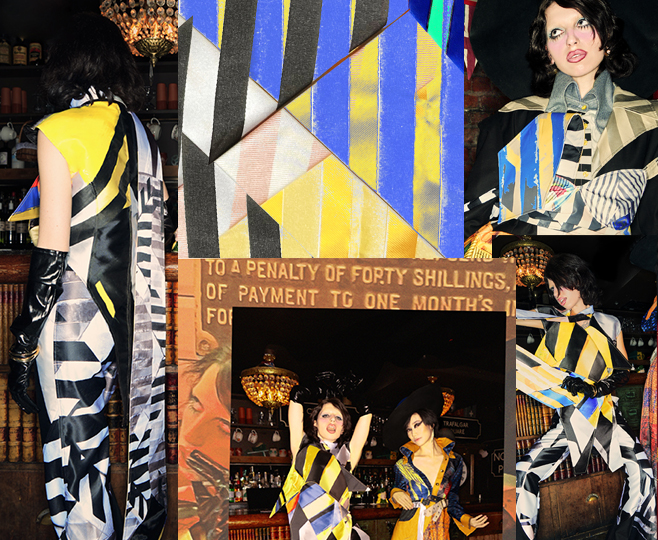
DETAIL
Reinventing Vintage Stripes: A Fresh Take on the Colour Palette
In my collection, vintage men’s striped ties are reimagined into elements of womenswear. I deconstruct these ties and integrate their unique patterns and textures into new print designs using a blend of physical techniques like markers and digital revision. Each tie's stripes contribute vibrant colours and distinct patterns, adding flair and individuality to each garment. This hybrid approach not only challenges gender norms but also showcases the ties’ versatility, transforming traditional male symbols into modern women's wear with a nod to their elegant past. This method allows for a rich layering of textures and colours, enhancing the visual depth and appeal of the prints.





